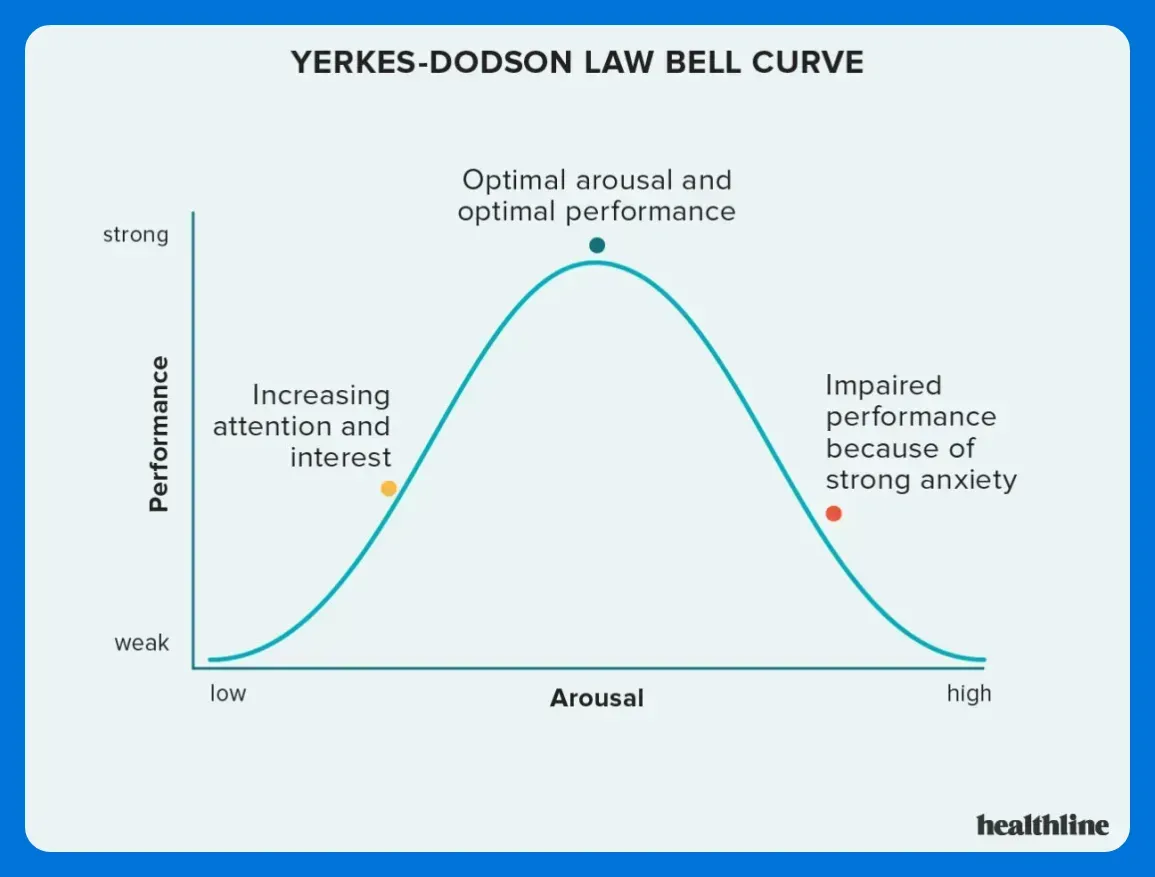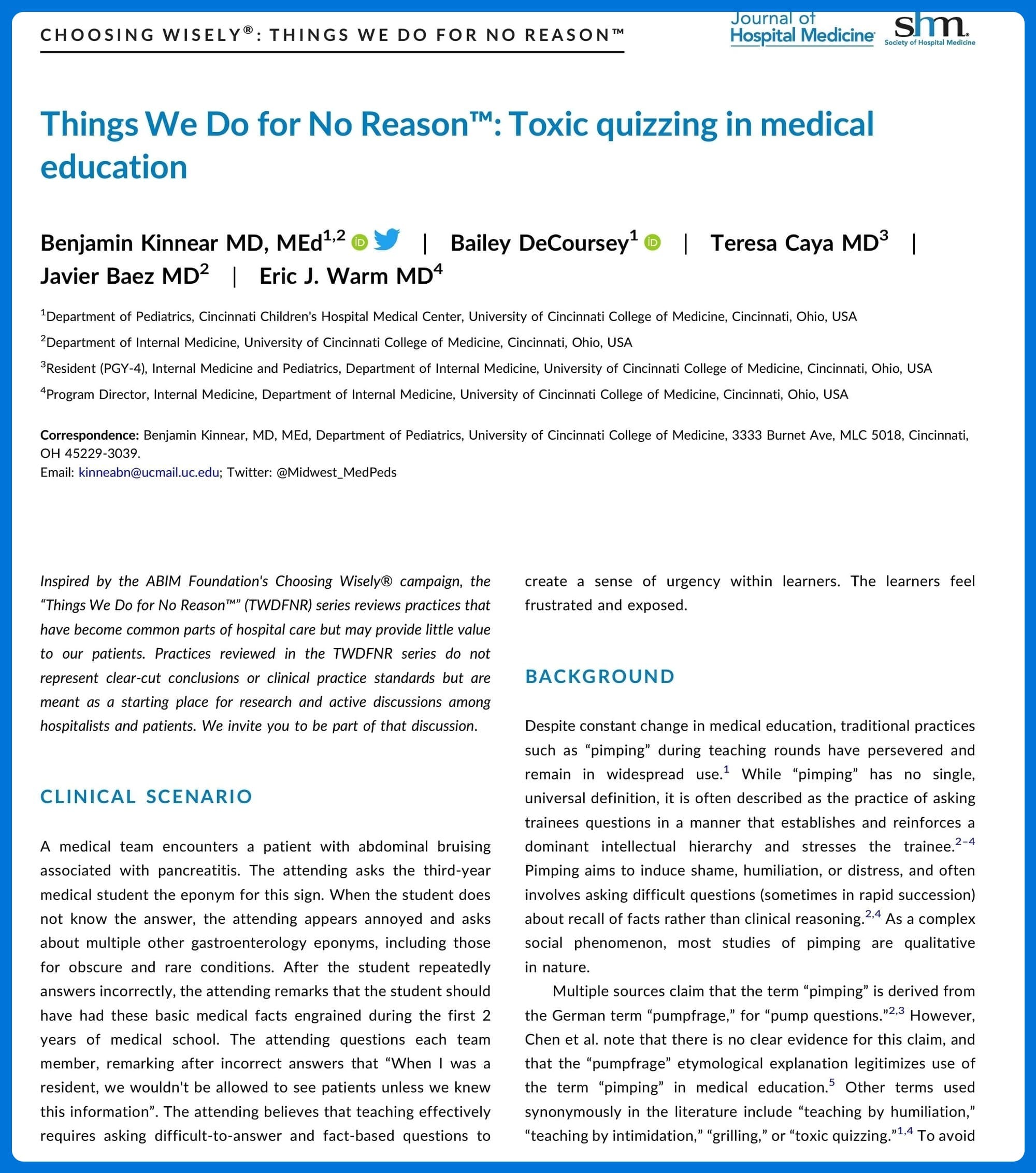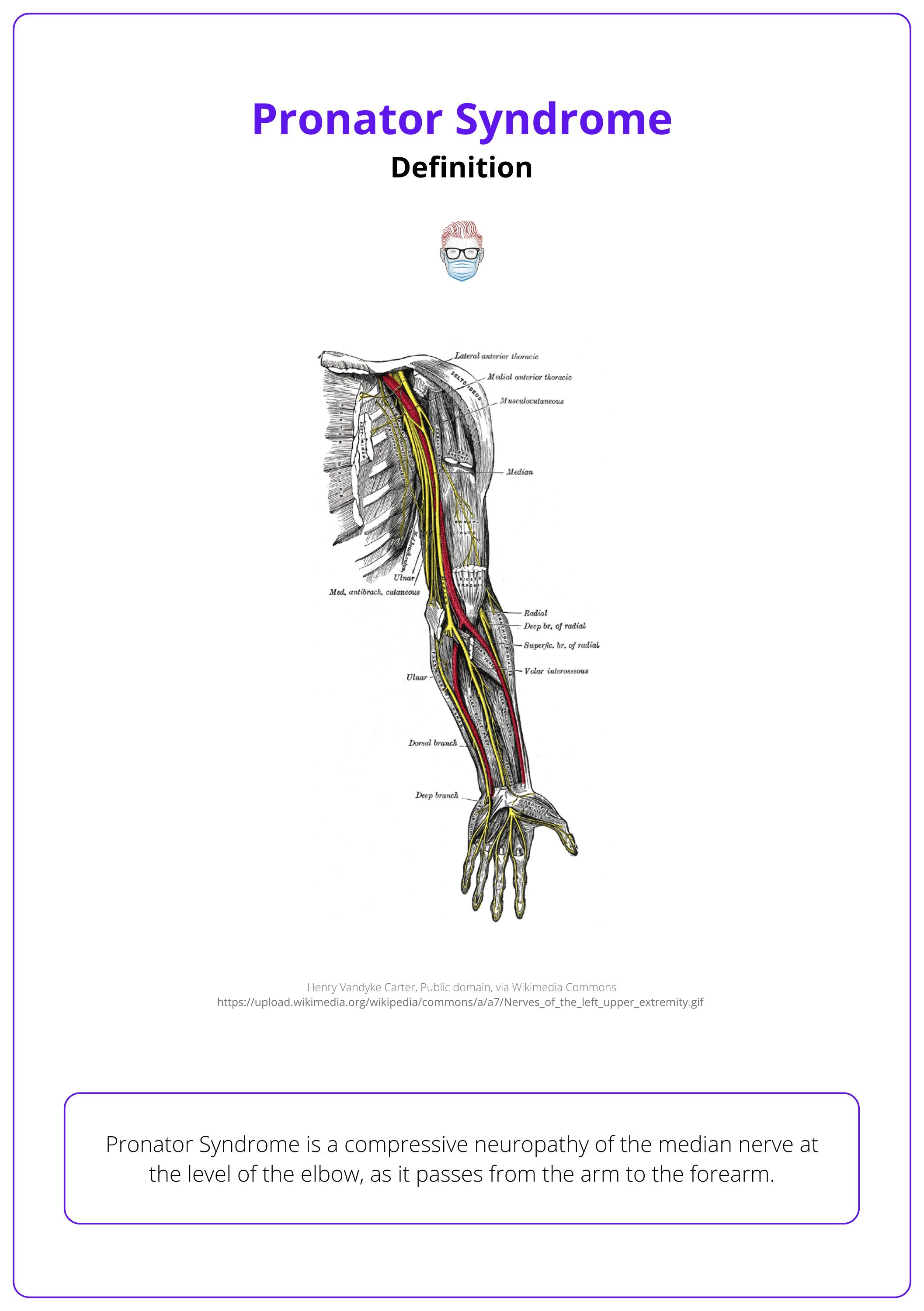In this week's edition
- ✍️ Letter from P'Fella
Removing Toxic Quizzing in MedEd - 🤓 The Sunday Quiz
How well do you know Pronator syndrome? - 🎙️ Behind the 'Fella
Sneak peek from episode 03: All things research. - 🎓 theFellow's Corner
Fresh drop: Clinical scenario of Dupuytren's disease. - 📖 What Does the Evidence Say?
Management of PIPJ contractures in Dupuytren's disease. - 🔥 Recommended Articles of the Week
Insights on Dupuytren contracture management; 3 articles with 1 sentence summaries. - 💕 Feedback
Suggest ideas & give feedback!
A Letter from P'Fella
Toxic Quizzing
Today, I want to dive into a controversial topic that’s been sparking debates in medical education circles: toxic quizzing. You might know it by another name—“pimping,” “grilling,” or “teaching by humiliation.”
👇
No matter what you call it, the practice of "toxic quizzing" involves asking rapid-fire, difficult questions meant to induce stress and expose knowledge gaps. It's a method some educators swear by, but is it truly effective, or does it do more harm than good?
Some educators believe that increasing learner stress can enhance learning, citing the Yerkes-Dodson law, which suggests performance improves with arousal up to a point, after which it declines. They argue that a bit of stress can motivate students to learn better and faster, summed up in the sentiment, “It worked for me, so it should work for you.”

But here’s the flip side: there’s scant evidence that toxic quizzing actually improves learning outcomes. Studies show this method can demoralize students, create anxiety, and even lead some to regret their choice of profession. Imagine being a student, asked obscure eponyms related to plastic surgery, and being berated for not knowing the answers. This doesn’t foster a love for learning; it breeds resentment and fear
This was detailed in the recent publication below.

So, What Should We Do Instead?
Effective quizzing should foster a safe learning environment where students feel free to explore their knowledge boundaries without fear of humiliation. Here’s how:
- Clarify Your Intentions: Let students know the purpose of questioning is to promote learning, not to assess their worth.
- Create Educational Safety: Foster a nonjudgmental, supportive environment. Encourage students to say, “I don’t know,” and treat it as a starting point for learning.
- Use Open-Ended Questions: Ask questions that stimulate critical thinking, like “Why do you think this bruising is happening?” or “How would you approach managing this condition?”
- Model Humility and Curiosity: Show that learning is continuous. Ask questions you don’t know the answers to, and explore together.
As educators, our goal should be to lift our learners up, not push them down. Yes, challenge them—push them to think deeply and critically—but do so in a way that builds their confidence, not tears it down.
Looking forward to your thoughts and experiences on this topic.
Lots of love,
P'Fella ❤️
The Sunday Quiz
How Well Do You Know Pronator Syndrome?
Welcome to the first round of The Weekly Quiz.
Each edition of thePlasticsPaper includes a quiz question designed to challenge and engage our readers. Keep your wits about you and join in every week — the winner at the end of six rounds will earn you a $100 voucher.

Behind the ‘Fella
Sneak Peek from Episode 03
If there's any specific discussion you're interested in, let us know below.
the Fellows' Corner
This Week's Focus: Dupuytren's Disease
In case you've missed out, here's a reminder to check out our fresh articles, clinical cases, and surgical techniques.
Read below for an overview of our clinical case on Dupuytren's Disease.
Dupuytren's Disease
Clinical Scenario
A 65-year-old male farmer presents with stiffness in the middle finger of his right hand, affecting his ability to grip objects and shake hands. He has uncontrolled diabetes on insulin, benign prostatic hyperplasia, and a history of carpal tunnel release 5 years ago. His father had similar hand problems but did not seek medical attention.
Objectives:
1. Outline the clinical assessment of this patient.
2. Knowledge of the fascial anatomy of the hand.
3. Describe the management options available for Dupuytren’s disease.
What Does the Evidence Say?
Management of PIPJ Contractures in Dupuytren's Disease
Surgical management of proximal interphalangeal joint (PIPJ) contractures in Dupuytren's disease is challenging.
While fasciectomy alone can improve contractures (Stepić et al., 2017), combining it with capsuloligamentous release may yield better outcomes for severe cases (Ritchie et al., 2004). However, some studies found no significant difference between fasciectomy alone and when combined with capsulotomy (Beyermann et al., 2002; Weinzweig et al., 1996). Collagenase injection has shown better outcomes for PIPJ contractures compared to surgical release (Povlsen & Povlsen, 2014), and ultrasound-guided aponeurotomy with capsular release demonstrated promising results (Villanueva et al., 2022).
Factors affecting surgical outcomes include age, preoperative flexion, and number of prior procedures (Ghidella et al., 2002). A recent systematic review concluded that fasciectomy provides superior long-term outcomes compared to collagenase and needle fasciotomy (Nann et al., 2023). The optimal treatment approach may depend on individual patient factors and contracture severity.
Articles of the Week
3 Interesting Articles with 1 Sentence Summaries
Treating Dupuytren contractures, including the increased use of collagenase Clostridium histolyticum (CCH), alongside traditional methods like needle aponeurotomy (NA) and surgical fasciectomy.
When to use different maangement techniques? An algorithm for traditional open fasciotomy or fasciectomy and modern, collagenase and needle aponeurotomy (PNA).
Discover comprehensive management strategies for Dupuytren's disease highlighting the benefits and limitations of various treatments, practical tips for surgical management, and an algorithm for treatment selection.


